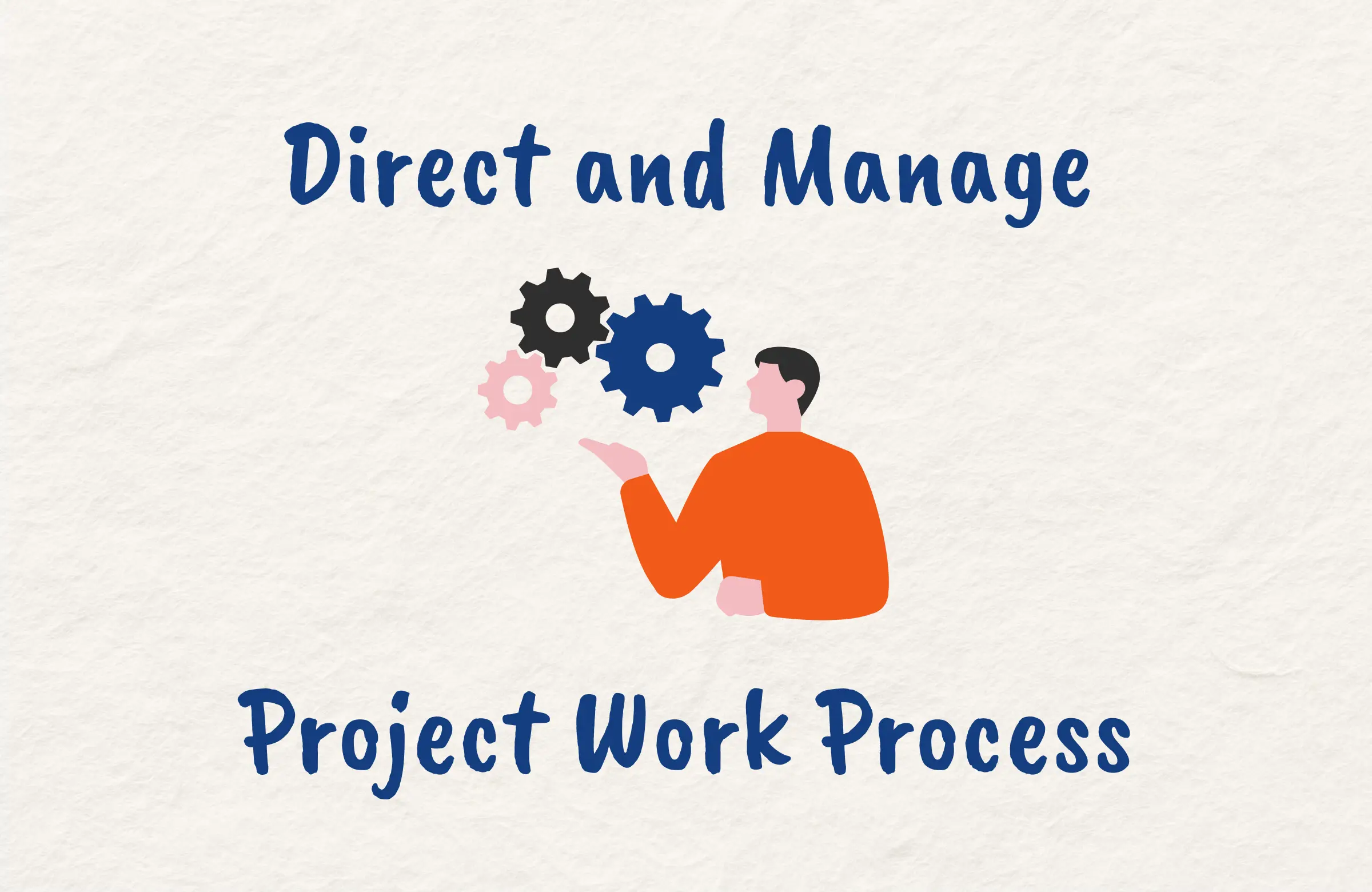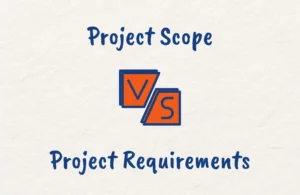After orchestrating a whole lot of strategic planning for your new project to ensure its success, overseeing the day-to-day execution of the actual project work is just as critical to achieving the desired success,
The Direct and Manage Project Work process is one of the 49 project management processes described in the PMBOK Guide 6th Edition. This process enables you to lead your team, allocate resources, and track progress while implementing the project management plan.
This process involves managing interfaces between your project and stakeholders, addressing changes, and producing deliverables.
In this post, we’ll explore the key inputs, tools and techniques, and outputs (ITTOs) of the Direct and Manage Project Work process. Understanding this process is essential for effectively guiding your project to success as well as the PMP exam preparation.
Direct and Manage Project Work Process in Project Management
The Direct and Manage Project Work process is an essential executing process defined in the Project Management Body of Knowledge (PMBOK) guide. As a project manager, you’ll spend a lot of your time in this process executing the day-to-day work to meet project objectives.
This process involves leading and directing your project team to accomplish the work defined in the project management plan. You’ll provide guidance to team members, manage communications, implement approved changes, and take corrective actions as needed.
Ongoing management of human resources, as well as physical and material resources, is key throughout project execution. To keep your project on track, you’ll monitor technical and schedule performance and maintain project documentation.
It’s also critical to engage regularly with stakeholders and manage relationships between your project and other organizational units. Careful oversight of these activities will enable you to produce deliverables that meet requirements and ultimately achieve your project goals.
Direct and Manage Project Work Activities
The Direct and Manage Project Work process involves carrying out many key activities which you’ll ultimately be responsible for as a project manager.
The activities in the Direct and Manage Project Work process include:
Executing the Project Management Plan
This is the core activity; you’ll guide your team in performing the work laid out in the project management plan. This includes managing project resources, assigning tasks, tracking deliverables, and ensuring activities align with scope, schedule, and cost baselines.
Managing Interfaces
You’ll need to engage regularly with stakeholders and manage relationships between your project and other units. This facilitates communication and resolves issues that arise at project interfaces.
Implementing Changes
Changes are inevitable, so you’ll assess change requests, get approvals, and modify activities to incorporate approved changes. This keeps the project aligned with changing needs.
Monitoring Performance
You’ll track the progress against schedule and budget to identify variances as well as monitor quality to ensure deliverables meet requirements. This enables you to take corrective actions where necessary.
Managing Communications
You’ll need to keep project documentation up-to-date and disseminate status reports to stakeholders, as well as facilitate collaboration through meetings and correspondence.
Conducting Procurement Activities
As part of this process, you’ll work with vendors and manage procurement relationships to obtain necessary materials and resources, and review vendor invoices and deliverables.
Direct and Manage Project Work Inputs
The PMBOK Guide outlines several key inputs that you’ll leverage to carry out the Direct and Manage Project Work process effectively:
Project Management Plan
This core document defines the project scope, schedule, and budget. It contains the strategy for executing the work and guides your day-to-day management.
Project Documents
Project documents provide detailed information on project activities. This includes the project schedule, requirements document, issue log, change log, assumption log, stakeholder register, and more.
Approved Change Requests
These are approved updates to the project scope, schedule, or budget. You’ll modify activities to implement approved changes.
Enterprise Environmental Factors
Enterprise Environmental Factors include organizational culture, structure, and resources that impact how you manage the project. You need to consider these factors when directing your team.
Organizational Process Assets
Organizational Process Assets include guidelines, processes, and templates defined by the organization to enable consistent project execution. As with the EEFs, you need to leverage these assets as appropriate.
Work Performance Data
Work Performance Data include status reports and performance metrics which give you visibility into progress. Use these to identify variances and take corrective actions.
As you execute the project plan, you’ll continually provide updates on project documents, change requests, and performance data. These become inputs to further iterate and improve project management.
Direct and Manage Project Work Tools and Techniques
There are various tools and techniques you can leverage to help execute the project work successfully including:
Expert Judgement
Consult experts, mentors, subject matter experts, and others to gain insights for making decisions about technical issues, procurement, resource allocation, and more.
Analytical Techniques
Use techniques like root cause analysis, alternatives analysis, and cost-benefit analysis to evaluate situations and guide optimal decisions.
Meetings
Hold regular meetings with the team and stakeholders to communicate updates, discuss issues, make decisions, and align on the next steps.
Project Management Information System
Use a PMIS to collect, store, and disseminate project information. It enables you to generate reports, track issues and monitor progress.
Interpersonal Skills
Leverage skills like empathic listening, negotiation, and conflict resolution to motivate team members, manage relationships, and address issues constructively.
Leadership Skills
Lead and motivate your team through your vision, clarity, transparency, and ability to inspire shared purpose and enable them to do their best work.
Direct and Manage Project Work Outputs
Executing the project management plan produces several key outputs that help you understand the status, improve the project plan, and ensure you meet objectives. These include:
Deliverables
These are the tangible products, services, or results produced while performing project activities. It’s important to review the deliverables to ensure they meet requirements.
Work Performance Data
This includes status reports, quality measurements, and other performance metrics that give visibility into progress and product quality.
Change Requests
If issues emerge, change requests may be submitted to modify the project plan. Assess these change requests and get approvals to implement them.
Project Plan Updates
The project plan may need to be updated to reflect approved changes. Incorporate updates to schedule, budget, scope, staffing, or other components.
Project Documents Updates
Project documents like the requirements document, risk register, and activity list need to stay current. You should update them as needed.
Organizational Process Assets Updates
If you identify improvements to organizational guidelines or processes, provide recommendations to update organizational process assets.
Why is it Important to Direct and Manage the Project Work During the Execution Phase?
Carefully directing and managing project work during the execution phase is crucial for several reasons including:
Achieving Objectives
The execution phase is when the project deliverables are produced. Proper oversight ensures activities align to scope, schedule, and budget and that deliverables meet requirements.
Managing Adaptively
The execution phase is often unpredictable as changes emerge and issues come up. Adept direction enables the team to adapt and modify plans to manage fluid situations.
Engaging Stakeholders
Ongoing communication and relationship management with stakeholders during execution helps ensure continued engagement, support, and collaboration.
Ensuring Quality
Consistent monitoring of quality and correcting deviations early on through change control enables the delivery of high-quality project outcomes.
Optimizing Resources
Careful resource management and allocation ensures proper staffing, facilities, and materials to perform project work efficiently.
Updating Plans
Execution provides greater clarity, often necessitating updates to project documents and the project management plan.
What Tasks Should a Project Manager Perform During the Direct and Manage Project Work Process?
The Direct and Manage Project Work process involves the project manager carrying out many crucial tasks including:
Executing the Project Plan
You need to guide your team in performing the activities and producing the deliverables laid out in the project management plan.
Managing Communications
Engage with stakeholders regularly through meetings, status reports, and correspondence. Keep them informed and resolve any issues.
Implementing Approved Changes
Assess change requests and modify activities to implement approved changes in the scope, schedule, or budget.
Monitoring Performance
Track progress against schedule and budget. Measure quality to ensure alignment with requirements to identify any variances or issues.
Managing Resources
Secure and manage the staffing, materials, and facilities needed to perform project work.
Updating Documentation
Keep the project plan, documents, logs, and other documentation current by incorporating relevant changes.
Direct and Manage Project Work PMP Exam Tips
On the PMP exam, you can expect several questions on the Direct and Manage Project Work process. Keep these tips in mind:
- Know the key inputs like the project plan, project documents, change requests, and Organizational Process Assets. Understand how the project manager leverages these.
- Be familiar with tools and techniques like analytical methods, meetings, PMIS, and leadership skills. Know how these aid in accomplishing work.
- Recognize the vital outputs which deliverables, work performance data, change requests, and updates to the project plan and documents. Know their purpose.
- Understand the detailed activities involved in executing the plan, managing communications, implementing changes, monitoring progress, and more.
- Grasp how to manage relationships and resolve conflicts between the project and other stakeholders.
- Know the steps to assess and implement change requests while managing the triple constraint.
In Summary
The Direct and Manage Project Work process is essential to effective project execution.
By leading your team in accomplishing tasks laid out in the project plan, managing communications and stakeholder relationships, implementing changes, and monitoring performance, you’ll drive your project to successful outcomes.
Mastering this process is key to passing your PMP exam and becoming an adept project manager who can execute projects skillfully. With diligent effort, you can gain expertise in directing and managing project work for project success.
FAQs
During Which Process Group Does the Direct and Manage Project Work Process Take Place?
The Direct and Manage Project Work process takes place during the Executing Process Group.





